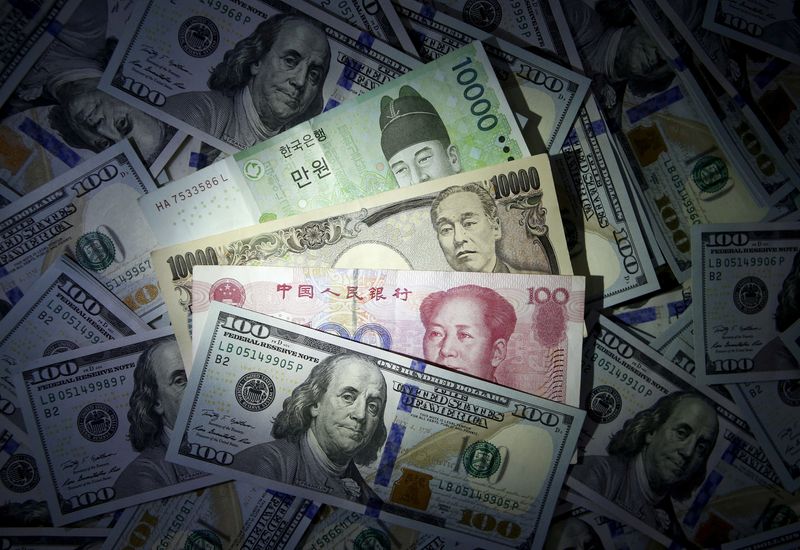SINGAPORE/LONDON (Reuters) -The dollar wobbled a touch on Thursday, the first day of trading of 2025, a year in which the U.S. currency is expected to perform strongly again after posting gains in 2024.
Market focus early in the year will be on the incoming Trump administration and its policies that are widely expected to not only boost growth but also add to price pressure. That will underpin U.S. Treasury yields and boost dollar demand.
A wide interest rate difference between the U.S. and other economies has cast a shadow over the foreign exchange market over the past year, resulting in most currencies declining sharply against the dollar in 2024.
None more so than the yen, which slid more than 10% in 2024 for its fourth year of decline.
However, it did manage to strengthen a touch on Thursday, with the dollar down 0.25% at 156.6 yen. The dollar reached a five-month high above 158 yen in late December.
Weaker growth outlook outside the U.S., conflict in the Middle East and the Russia-Ukraine war have also added to demand for the dollar.
“The U.S. dollar is likely to remain in pole position (this year) given its still-high yield, U.S. exceptionalism and its safe-haven appeal in uncertain times,” said Saxo Chief Investment Strategist Charu Chanana.
The euro also briefly posted small gains on Tuesday, but these were short-lived and it was last flat on the day at $1.0351, down from above $1.12 in late September.
Traders anticipate deeper interest rate cuts from the European Central Bank in 2025, with markets pricing in 113 basis points of easing versus 42 bps of cuts priced in from the U.S. central bank.
Even those who are more cautious about sustained dollar strength think it could take a long time to play out.
“The dollar may be vulnerable – but only if the U.S. data confound market expectations that the Fed doesn’t cut rates more than once in the first half of this year, and not by more than 50bp in the whole of 2025,” said Kit Juckes chief FX strategist at Societe Generale (OTC:SCGLY) in a note.
“There’s a good chance of that happening, but it seems very unlikely that cracks in U.S. growth will appear early in the years – hence my preference for taking any bearish dollar thoughts with me into hibernation until the weather improves.”
Sterling dipped 0.2% to $1.250 It fell 1.7% last year but was nevertheless the best-performing G10 currency versus the dollar, mainly as the British economy held up better than was widely expected,, which, in combination with sticky services inflation meant the Bank of England has been more hawkwish than peers.
China’s yuan languished at 14-month lows as worries about the health of the world’s second-biggest economy, the prospect of U.S. import tariffs from the Trump administration and sliding local yields weighed on investor sentiment. [CNY/]
After falling 2.8% against the greenback in 2024 for its third consecutive year of loss, the onshore yuan bounced from lows of 7.31 per dollar. Traders said that could reflect authorities’ desire to rein in the currency’s slide before Donald Trump returns to the White House.
Elsewhere, the Swiss franc, another victim of the recent dollar strength, firmed a touch, and the dollar was last down 0.23% at 0.9051 francs. The euro was steady on the franc at 0.9375.

The Australian and New Zealand dollars both drifted away from the two-year lows touched on Tuesday. The Aussie was 0.28% higher at $0.621 having dropped 9% in 2024, its weakest yearly performance since 2018. [AUD/]
The kiwi rose 0.47% to $0.5614.
To read the full article, Click Here

